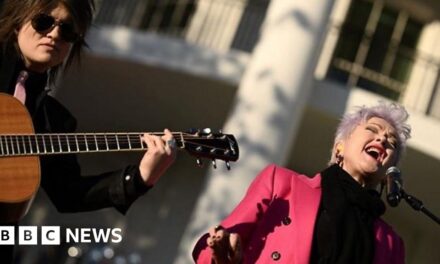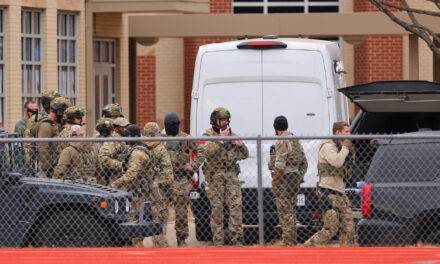
White House to Spend Billions to Increase Virus Testing and Ease Reopening
WASHINGTON — The Biden administration, moving to address a lag in coronavirus testing that is hindering the reopening of schools and the economy, said Wednesday that it would invest $10 billion to ramp up screening of students and educators with the goal of returning to in-person learning by the end of the school year.
Congress approved the $10 billion expenditure when it passed President Biden’s $1.9 trillion stimulus package, which he signed into law last week. The Centers for Disease Control and Prevention will distribute the money to states in early April and will spend an additional $2.25 billion to expand testing in underserved communities beyond the schools, officials said.
How far those moves will go toward reopening schools and reviving the economy is unclear. Experts say the United States does not have nearly enough rapid tests to conduct the kind of routine screening the administration envisions to allow students and teachers to safely return to the classroom.
“This isn’t going to move the needle,” said Michael Mina, an immunologist and epidemiologist at Harvard who argued that onerous Food and Drug Administration regulations were worsening the coronavirus crisis by preventing new types of rapid antigen tests from being approved.
“The states don’t just need money,” Dr. Mina said. “The states don’t just need advice from the C.D.C. The states need the test to be available.”
The moves come as coronavirus testing declines nationwide, a trend deeply concerning to public health experts. Some states have converted mass testing sites to mass vaccination centers, and their overtaxed health departments do not have the bandwidth to do both.
Between Feb. 1 and March 15, as the infection rate dropped and Americans focused on getting vaccinated, the average number of coronavirus tests being conducted daily dropped 24 percent, according to statistics maintained by Johns Hopkins University.
Jennifer B. Nuzzo, a Johns Hopkins epidemiologist who wrote about the decline in an opinion piece in The New York Times, said in an interview that aggressive testing remained vital to ending the pandemic, especially as more contagious coronavirus variants emerged and states relaxed their lockdown measures. She said the Biden administration needed to move quickly on testing to make a difference.
“I understand why states are focusing on vaccines,” Dr. Nuzzo said. “It’s very important that we prioritize the rollout of vaccines, but not at the complete expense of testing.”
Experts including Dr. Nuzzo and Dr. Mina say the United States has never fully deployed testing as an effective tool for tracking and containing the virus. The Biden administration’s new initiatives are an attempt to do that by testing asymptomatic people — particularly students, teachers and school staff — to detect outbreaks before they explode, as opposed to simply testing those with symptoms to determine if they are infected.
Reopening schools has been one of Mr. Biden’s top priorities — and one of the most contentious issues facing the administration. With millions of American children still confined to virtual learning, education experts say that many are suffering, psychologically as well as academically.
Even so, many schools are already operating at least partially in person, and evidence suggests they are doing so relatively safely. Research shows in-school spread can be mitigated with simple safety measures like masking, distancing, hand-washing and opening windows.
Mr. Biden’s education secretary, Miguel A. Cardona, said Wednesday that the department would have a “national reopening summit for schools” next week, and would outline “best practices from across the country on how to do this safely and how to do it quickly.”
Mr. Biden, who initially called for all schools to reopen within 100 days of his inauguration, later narrowed that goal to elementary and middle schools, and has set the reopening benchmark at “the majority of schools,” or 51 percent. But there are still many hurdles, including convincing teachers’ unions that policies are in place to ensure a safe return and easing the fears and frustrations of parents.
One stumbling block to reopening has been the C.D.C.’s recommendation that people remain six feet apart if they do not live in the same household. Amid a growing understanding of how the virus spreads, some public health experts are calling on the agency to reduce the recommended distance from six feet to three.
Dr. Anthony S. Fauci, Mr. Biden’s senior medical adviser for the pandemic, and Dr. Rochelle Walensky, the C.D.C. director, have said the guidance for social distancing in schools is under review.
The administration said Wednesday that the C.D.C. and state and local health departments would help states and schools put testing programs in place. The C.D.C. also updated its guidance on which types of tests should be used in different settings, such as schools, prisons or nursing homes.
The new guidance provides more information about different kinds of tests, including how to choose among them and interpret the results. The agency recommends that people who have Covid-19 symptoms or who may have been exposed to someone with the disease take a diagnostic test.
These tests include polymerase chain reaction, or P.C.R., tests, which can detect very small traces of viral DNA but typically need to be processed in a laboratory, and antigen tests, which are less sensitive but generally cheaper and faster.
Antigen tests may be especially useful for screening large numbers of people — in schools or workplaces, for instance — who do not have symptoms. However, their lower sensitivity means that follow-up laboratory testing may be required, the C.D.C. guidance notes.
Frequently Asked Questions About the New Stimulus Package
The stimulus payments would be $1,400 for most recipients. Those who are eligible would also receive an identical payment for each of their children. To qualify for the full $1,400, a single person would need an adjusted gross income of $75,000 or below. For heads of household, adjusted gross income would need to be $112,500 or below, and for married couples filing jointly that number would need to be $150,000 or below. To be eligible for a payment, a person must have a Social Security number. Read more.
Buying insurance through the government program known as COBRA would temporarily become a lot cheaper. COBRA, for the Consolidated Omnibus Budget Reconciliation Act, generally lets someone who loses a job buy coverage via the former employer. But it’s expensive: Under normal circumstances, a person may have to pay at least 102 percent of the cost of the premium. Under the relief bill, the government would pay the entire COBRA premium from April 1 through Sept. 30. A person who qualified for new, employer-based health insurance someplace else before Sept. 30 would lose eligibility for the no-cost coverage. And someone who left a job voluntarily would not be eligible, either. Read more
This credit, which helps working families offset the cost of care for children under 13 and other dependents, would be significantly expanded for a single year. More people would be eligible, and many recipients would get a bigger break. The bill would also make the credit fully refundable, which means you could collect the money as a refund even if your tax bill was zero. “That will be helpful to people at the lower end” of the income scale, said Mark Luscombe, principal federal tax analyst at Wolters Kluwer Tax & Accounting. Read more.
There would be a big one for people who already have debt. You wouldn’t have to pay income taxes on forgiven debt if you qualify for loan forgiveness or cancellation — for example, if you’ve been in an income-driven repayment plan for the requisite number of years, if your school defrauded you or if Congress or the president wipes away $10,000 of debt for large numbers of people. This would be the case for debt forgiven between Jan. 1, 2021, and the end of 2025. Read more.
The bill would provide billions of dollars in rental and utility assistance to people who are struggling and in danger of being evicted from their homes. About $27 billion would go toward emergency rental assistance. The vast majority of it would replenish the so-called Coronavirus Relief Fund, created by the CARES Act and distributed through state, local and tribal governments, according to the National Low Income Housing Coalition. That’s on top of the $25 billion in assistance provided by the relief package passed in December. To receive financial assistance — which could be used for rent, utilities and other housing expenses — households would have to meet several conditions. Household income could not exceed 80 percent of the area median income, at least one household member must be at risk of homelessness or housing instability, and individuals would have to qualify for unemployment benefits or have experienced financial hardship (directly or indirectly) because of the pandemic. Assistance could be provided for up to 18 months, according to the National Low Income Housing Coalition. Lower-income families that have been unemployed for three months or more would be given priority for assistance. Read more.
In apparent anticipation of Wednesday’s announcement, the F.D.A. said on Tuesday that it was providing new recommendations and information for test developers to “streamline” the path to emergency approval for screening tests.
But Dr. Mina said the new guidelines do not address what he regards as a fundamental problem: The F.D.A. is holding up the approval of new rapid antigen tests, including at-home tests, by incorrectly measuring them against the more sensitive P.C.R. tests. Dr. Mina said the two are not comparable. While rapid tests are available, their production has fallen far behind the need. Currently, just three at-home tests have F.D.A. authorization.
“The requirements of the F.D.A. have not kept up with the science,” he said. “They are living in this archaic world where P.C.R. is the only test and the only metric, and literally requiring antigen test after antigen test to be buried in purgatory.”
He also noted that federal guidelines do not address another hurdle schools are facing: the requirement that they obtain certification under the Clinical Laboratory Improvement Amendments, or CLIA, a set of 1988 regulations that impose restrictions on who can administer laboratory tests.
Dr. Walensky said Wednesday that, while some states have found creative ways around the requirement, “there continues to be more work to do” to address the issue.
The $2.25 billion for testing in underserved populations is intended to address the racial disparities laid bare by the pandemic. Black and Latino people are far more likely than white people to get infected with the coronavirus and to die from Covid-19, and those disparities extend to testing, experts say. The vaccination rate for Black people in the United States is half that of white people, and the gap for Hispanic people is even larger, according to a Times analysis of state-reported race and ethnicity information.
The money will be given in grants to public health agencies to improve their ability to test for and track the virus.
Dr. Marcella Nunez-Smith, who leads Mr. Biden’s Covid-19 equity task force, told reporters that the administration was also working on getting therapy treatments, including monoclonal antibody therapies, to underserved communities through a $150 million grant.
“For those individuals who get Covid-19, we want to make sure that they too have the benefit of the latest in scientific discovery,” she said, “to help them hope and help them toward a safe and speedy recovery.”
Emily Anthes contributed reporting from New York.

















